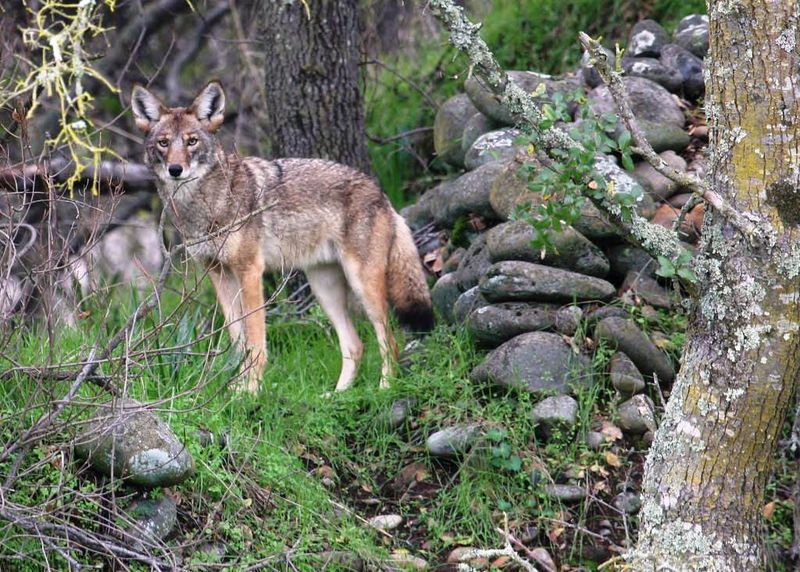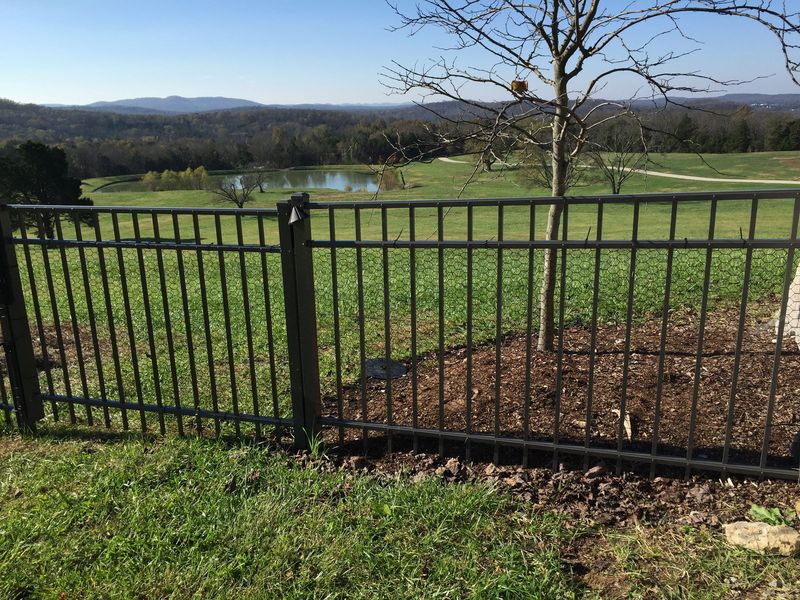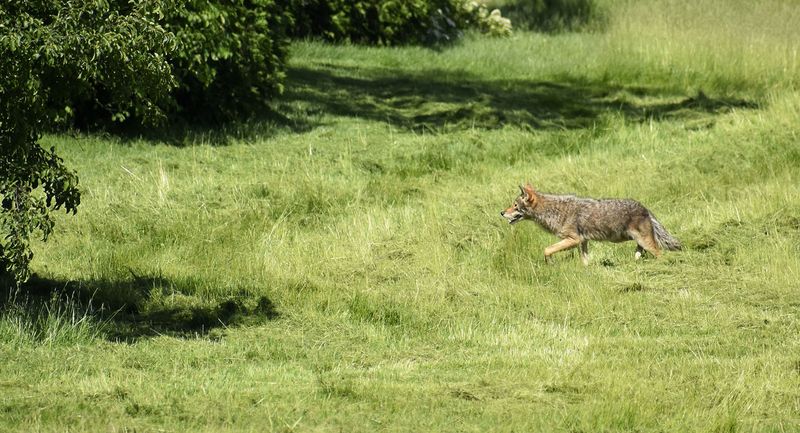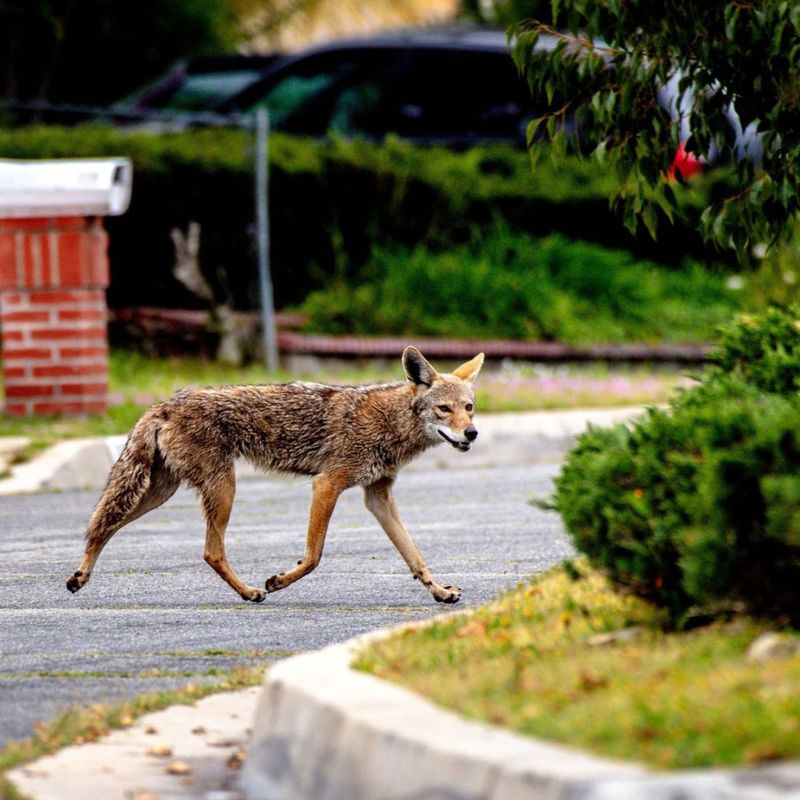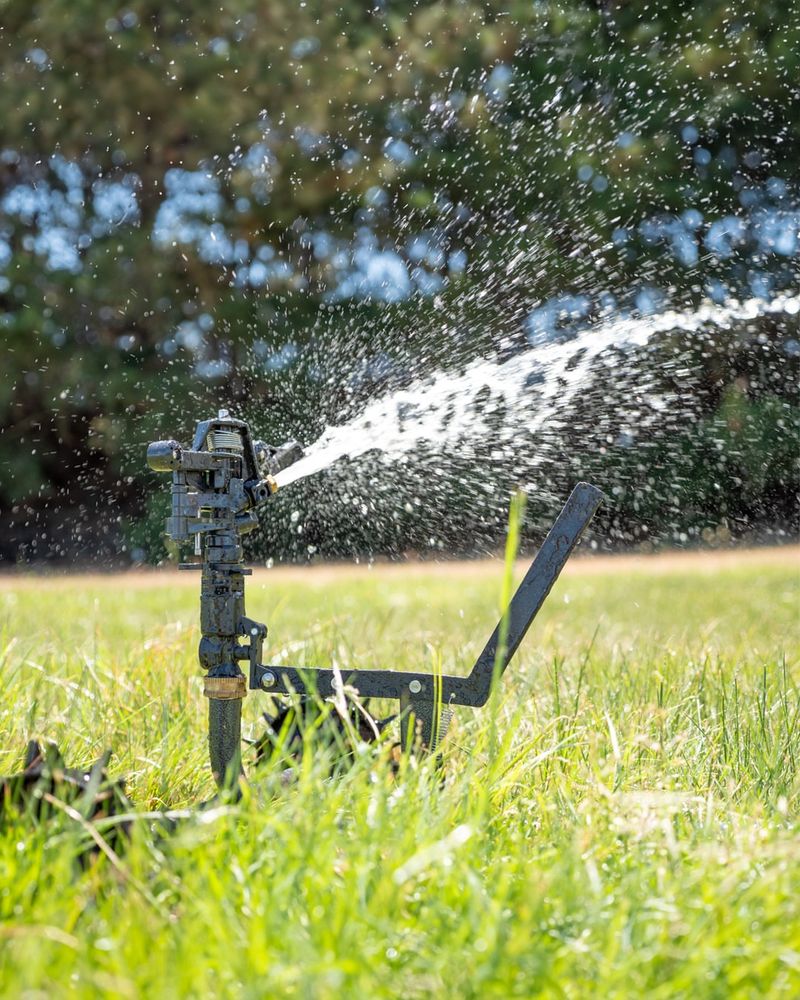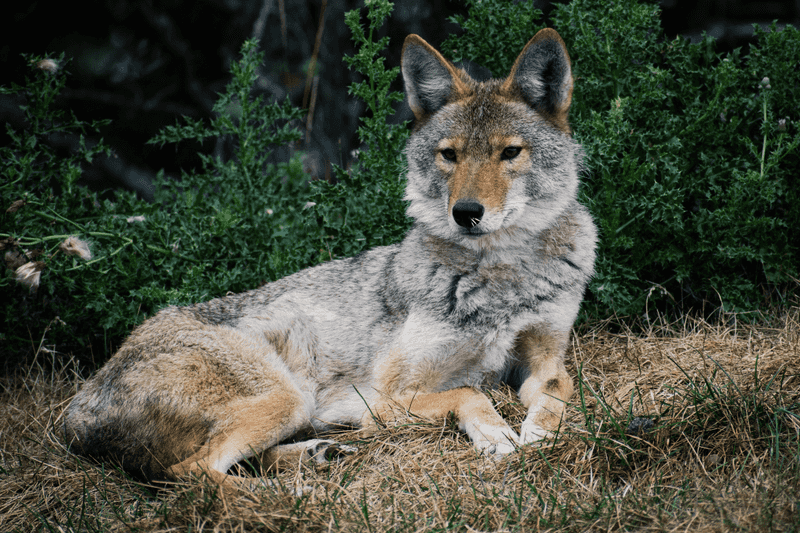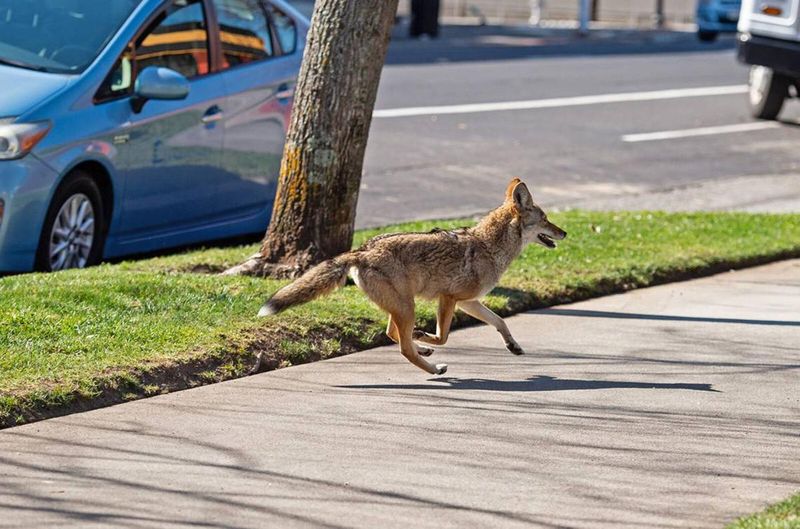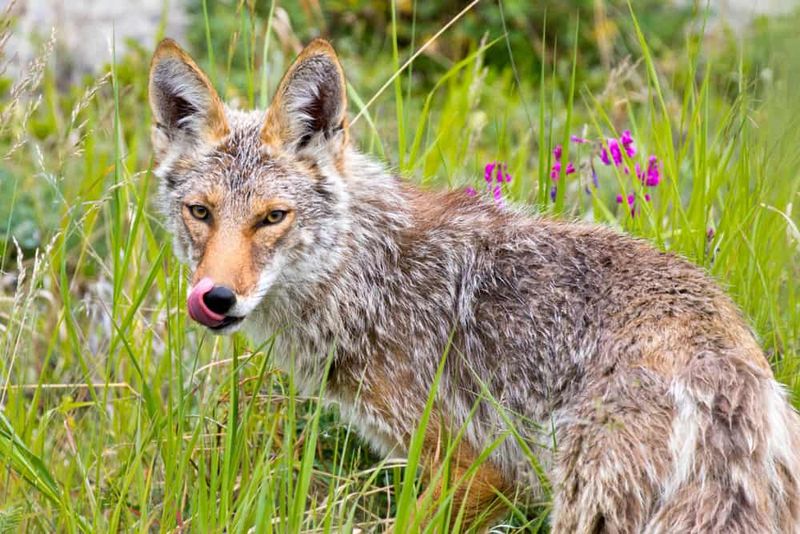Coyotes are becoming a familiar sight in North Carolina neighborhoods as they continue to expand their range. These clever animals are adjusting to suburban life, often showing up in backyards and near gardens. Their presence is a sign of shifting habitats and growing overlap with human spaces.
While coyotes are usually wary of people, that caution can fade if they get too comfortable. When they lose their fear, they may linger near homes or food sources. That’s when problems can arise—and why awareness matters.
Whether you’re harvesting tomatoes or enjoying a quiet evening on the porch, it’s smart to know how to react. Staying calm, keeping your distance, and securing attractants helps protect both your family and the wildlife.
1. Stay Calm And Keep Your Distance
When I first spotted a coyote near my tomato plants, my heart raced, but I remembered that panicking only makes things worse. These animals are typically more afraid of you than you are of them.
Maintain at least 50 feet of space between you and the coyote. This distance gives both of you breathing room and prevents the animal from feeling cornered in your garden space.
If you’re working in your raised beds when you notice the visitor, slowly back away toward your house while keeping an eye on the animal.
2. Make Noise To Scare Them Off
Loud, startling sounds can effectively convince coyotes your yard isn’t a welcoming place. My neighbor in Raleigh keeps an air horn by her back door specifically for wildlife encounters near her berry bushes.
Banging pots together, blowing whistles, or shouting in a deep voice sends a clear message. The commotion disrupts their hunting and makes your property seem dangerous rather than a food source.
Remember that consistency matters. Make noise every time you see a coyote to reinforce that your garden territory isn’t safe for them.
3. Remove Food Sources From Your Yard
Coyotes are opportunistic eaters that will happily feast on fallen fruit from your orchard trees or vegetables left to rot in the garden. I’ve learned to harvest my squash promptly after watching a coyote investigate overripe ones I’d neglected.
Secure garbage cans with wildlife-proof lids and never leave pet food outside overnight. Even bird feeders can attract coyotes indirectly, as they hunt the small animals that gather for seeds.
Keep compost bins securely closed and avoid adding meat or dairy products that might smell enticing to these wild canines.
4. Protect Your Garden With Proper Fencing
After losing several young vegetable plants to curious coyotes, I invested in better garden protection. A fence at least 6 feet tall with an additional 18 inches buried underground prevents digging.
Adding a 15-degree outward angle at the top discourages jumping. This method has protected my heirloom tomatoes and keeps my native plant beds safe from trampling paws.
For smaller garden patches, consider installing motion-activated sprinklers around the perimeter. The sudden spray of water startles coyotes without causing harm.
5. Use Motion-Activated Lights Around Your Property
Coyotes prefer to move under the cover of darkness, especially when exploring garden areas for mice or rabbits. Motion-activated lights can startle them away from your property.
I positioned solar-powered lights around my raspberry patch after noticing paw prints there one morning. The sudden brightness when triggered makes wildlife feel exposed and vulnerable.
For best results, place lights at various heights—some at eye level for coyotes and others higher up to illuminate a larger area of your yard and garden beds.
6. Trim Overgrown Vegetation Where Coyotes Might Hide
Dense shrubs and tall grasses provide perfect hiding spots for coyotes stalking prey near your garden. Last summer, I discovered a coyote resting under an overgrown forsythia bush right beside my vegetable patch.
Regular pruning of native shrubs and ornamental grasses creates visibility across your yard. This makes coyotes feel exposed and less likely to linger among your plants.
Pay special attention to areas around bird feeders, compost bins, and vegetable gardens where prey animals might gather, making them natural hunting grounds.
7. Supervise Small Pets When They’re Outside
My Chihuahua nearly had a dangerous encounter with a coyote that was drinking from the irrigation puddles near my squash plants. Small pets can look like prey to hungry coyotes, especially during dawn and dusk hours.
Always accompany small dogs outside, even in fenced yards. Keep them on leashes during walks, particularly near wooded areas adjacent to your garden spaces.
Consider installing a coyote roller system on top of your fence—these rolling bars prevent coyotes from getting the foothold they need to climb over into areas where pets might be.
8. Contact Wildlife Officials If Coyotes Seem Aggressive
Most coyotes I’ve spotted near my raised beds simply trot away when noticed. However, if one shows unusual boldness or aggression, it’s time for expert help.
North Carolina Wildlife Resources Commission can provide guidance specific to your situation. They understand the balance between wildlife management and protecting your garden investments.
Document any concerning behavior, including the time of day and what the coyote was doing in your yard. This information helps officials determine if intervention is necessary.
9. Install Motion-Activated Sprinklers As Deterrents
After trying various methods, motion-activated sprinklers proved most effective for keeping coyotes away from my strawberry patch. The sudden burst of water creates an unpredictable threat that wildlife instinctively avoids.
Position these devices strategically around garden entrances and vulnerable planting areas. They’re especially useful near compost bins or fruit trees where food attractants can’t be completely eliminated.
As a bonus, these sprinklers help water your plants while protecting them. I’ve noticed my native flower beds look healthier since installation.
10. Educate Neighbors About Coyote Management
Coyotes don’t recognize property lines, so neighborhood cooperation makes a huge difference. I organized a community meeting after several Chapel Hill neighbors reported coyotes sampling their vegetable gardens.
Share information about removing attractants like fallen fruit, securing compost bins, and proper garbage storage. A unified approach creates a larger unwelcoming zone for wildlife.
Consider creating a neighborhood text alert system to warn others when coyotes are spotted near garden areas. This helps everyone take timely precautions to protect their yards.
11. Use Natural Deterrents Like Predator Urine
Commercial products containing predator urine can convince coyotes your garden territory is already claimed by a dangerous animal. I sprinkle these granules around the perimeter of my vegetable beds monthly.
Wolf or mountain lion urine products are particularly effective. Apply them more frequently after rain washes away the scent, especially near fruit trees or berry bushes that might attract wildlife.
For a budget-friendly option, male human urine can work similarly. My husband’s contribution around our blueberry bushes has notably reduced coyote tracks in that area.
12. DON’T Feed Coyotes Intentionally Or Accidentally
Offering food to wild coyotes is the fastest way to create problem behaviors. One well-meaning Charlotte neighbor started leaving scraps near her compost pile and soon had coyotes regularly visiting her raised beds.
Even indirect feeding causes issues. Unsecured compost containing food scraps, bird feeders that spill seed, and unharvested garden vegetables can all attract these opportunistic eaters.
Once coyotes associate your yard with food, they lose their natural wariness of humans and become bolder around your garden spaces.
13. DON’T Run Away If You Encounter A Coyote
Running triggers a predator’s chase instinct. Last spring, I froze when spotting a coyote between me and my tool shed, then slowly backed toward the house instead of bolting.
Make yourself appear larger by raising your arms while facing the animal. This posture communicates that you’re not prey and are willing to defend your garden territory.
Maintain eye contact while slowly backing away toward safety. This controlled retreat from your garden area shows confidence rather than fear, which coyotes respect.
14. DON’T Try To Trap Or Relocate Coyotes Yourself
DIY wildlife relocation is dangerous, illegal in many areas, and often ineffective. My gardening friend learned this lesson after attempting to trap a coyote that kept digging in her native plant garden.
Coyotes are territorial—removing one often leads to another taking its place. Professional wildlife experts understand migration patterns and can implement more effective long-term solutions for your garden areas.
Focus instead on making your yard less attractive through proper garden maintenance and deterrents rather than attempting removal.




